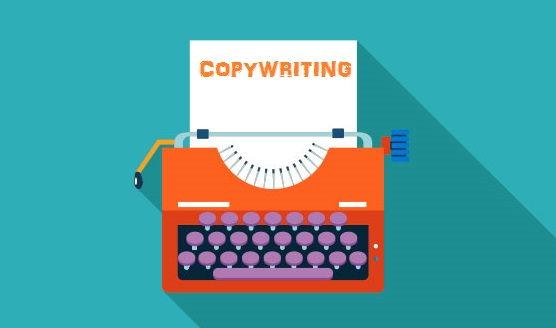Once Upon a Time: Trade Secrets of Copywriting from Ancient Near Eastern Storytellers
The internet is abuzz with storytelling. Novelists, filmmakers, and playwrights have been churning out narratives for years, but now copywriters stake their claims to the elements of story. We’re no longer selling products; we’re now telling a brand’s story.
Donald Miller, CEO of Storyline and New York Times bestselling author, says, “Telling a good story is the key to being understood.”
We moderns are not the first people to discover story’s power to connect, of course. Humans have told stories since pre-historic times. Who was it but the ancient storytellers who gave us the towering tales of Homer, Beowulf, Canterbury, and Genesis?
What’s the first story you remember reading? Or writing? Or hearing? I remember reading Charlotte’s Web and crying for hours afterward. That’s how I knew I loved story.
According to Persian legend, Scheherazade told the greatest stories of all time. She, perhaps, was the first content marketer. Certainly, she had more riding on her success than most of us do. After the king of Persia’s first wife proved faithless, he married a string of women. Each subsequent wife spent one night with him before he had her executed. Scheherazade chose to end the massacre by marrying the king herself. She cleverly spent her one night telling the king a story. She stopped at the climax and refused to continue until the following night. The king spared her in order to hear the end of the story.
The next night, Scheherazade finished the story and began another, stopping again at the climax. This continued for 1,000 stories over 1,001 nights until the king relented his decree of death and made Scheherazade his queen. Her stories became The Arabian Nights.
What about Jesus? Nearly all his teachings contain a story. Jesus, though, didn’t tell stories for their own value. He typically left the characters unnamed and the endings open—as if he intended his hearers to see themselves in the story and then finish it in their own lives. Sort of like a good content marketer would do, only Jesus also redeemed the world while he was at it.
Drawing from these examples, how can we use the power of story to sell products through great copywriting? Let’s take a quick look at the 5 elements of story and how they influence writing for business.
Turn to Donald Miller again. “A story is a character who wants something and has to overcome conflict to get it.”
Character – In story theory, a main character is “the player through whom the audience experiences the story firsthand.”[1] Who is the main character in a business’ content? The reader is a popular answer, and it’s often true. Sometimes, however, another character stands in for the customer. Think about Flo from Progressive, the Geico Gecko, the “Dude, you’re getting’ a Dell” guy, and the old lady who asked “Where’s the beef?”
Have an identifiable main character in your business’ story.
Setting – What’s the time and location in which the character faces conflict? Fiction and narrative non-fiction require a setting to ground the story in the reader’s imagination. Why does setting matter for content marketing? Because the setting in your story needs to be the one your reader wishes he or she were in.
Set your story where the reader or customer wants to see himself go, not where he already is (‘cause that’s boring).
Conflict – All stories need conflict.* Without it, you have a series of events, not a story. I’m reading Crossing the Line, a great novel by Bibi Belford. I want to keep going because I have to resolve the conflict. But I can’t stand to keep going because I know the conflict’s going to get worse before it gets better. That means, of course, that the author did her job with the conflict element of her story.
If you sell diet products, your reader’s conflict is between fatty food and health food, between the gym and the sofa. Stoke that conflict until the readers have to see it resolved in their own lives. (For examples, see Jesus’ parables.)
Plot – Is your brand’s or business’ plot emotionally engaging? Think a story about a business can’t stir your emotions? Check out this ad for Kleenex, this one for life insurance, and this one for a brand of automobiles. I’ll wait while you collect yourself.
Don’t let your brand’s story appeal to people’s greed. Stay true to the better side of human nature. We could all use a little grace, after all.
Theme – Flannery O’Connor, the South’s greatest storyteller, said, “People talk about the theme of a story as if the theme were like the string that a sack of chicken feed is tied with. They think that if you can pick out the theme, the way you pick the right thread in the chicken-feed sack, you can rip the story open and feed the chickens. But this is not the way meaning works.”
Theme flows naturally from the other four elements. Don’t try to shove it in there.
If you write fiction, tell me what I missed. Are there other elements of the story? Other links between writing novels and writing for business? Anything else that would make the links between storytelling and copywriting clearer?
The internet’s abuzz with storytelling. Why not add your voice to the conversation?
*All novelists who are able, please stand and shout your agreement. Thank you.
[1] http://dramatica.com/theory/book/characters
Holland Webb: I love telling the stories that people put down so they go take action. I’m an advertising copywriter by day, an aspiring novelist by night, a parent, a dog-lover, a prison volunteer and a follower of Jesus.







2 Comments
I always enjoy your articles, Holland, for the way you include your unique slant. You never fail to sell your point.
Thank you, Burton. I hope all is well with you.